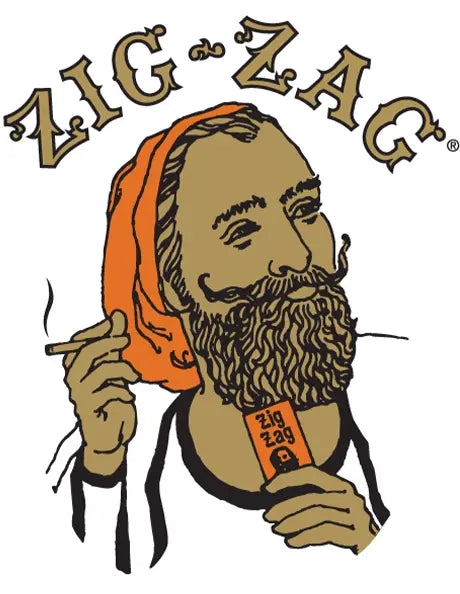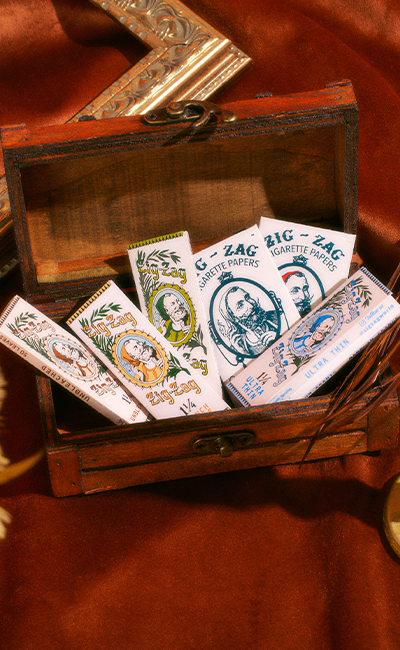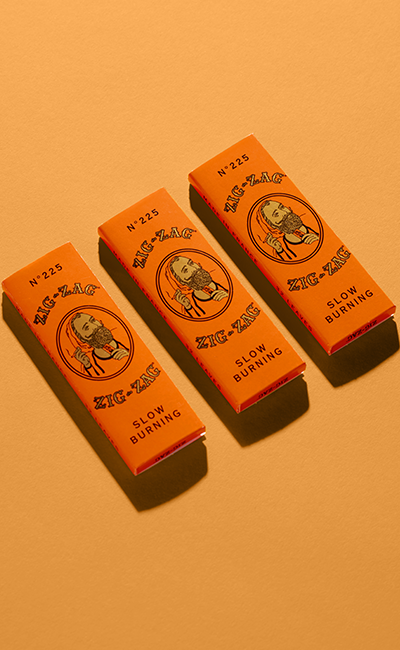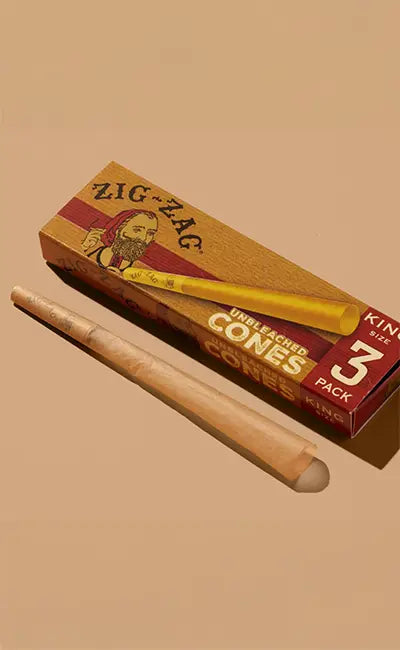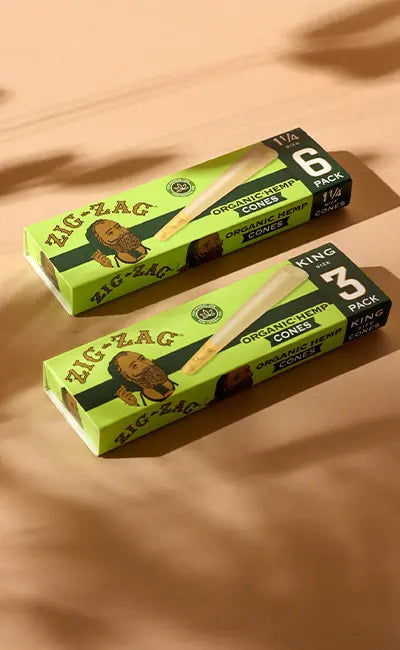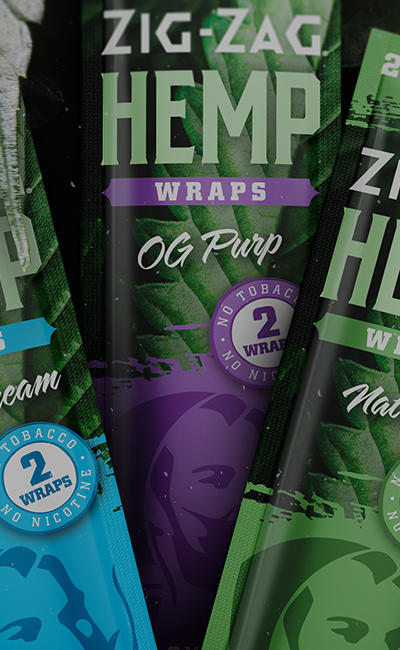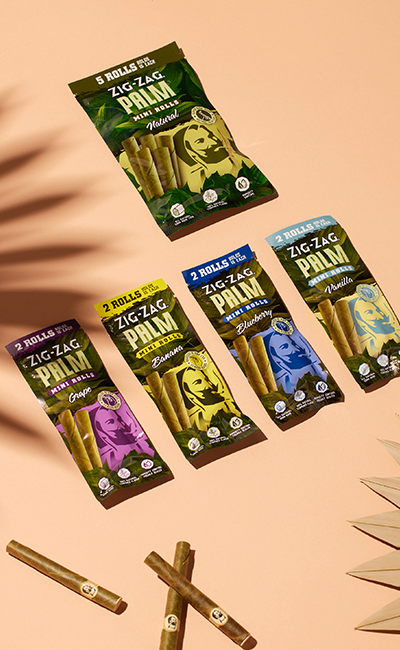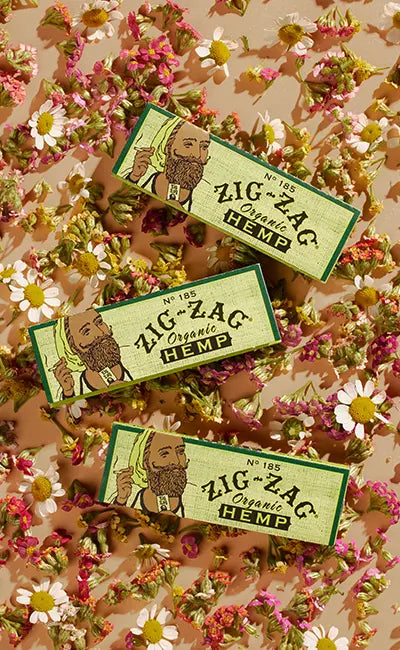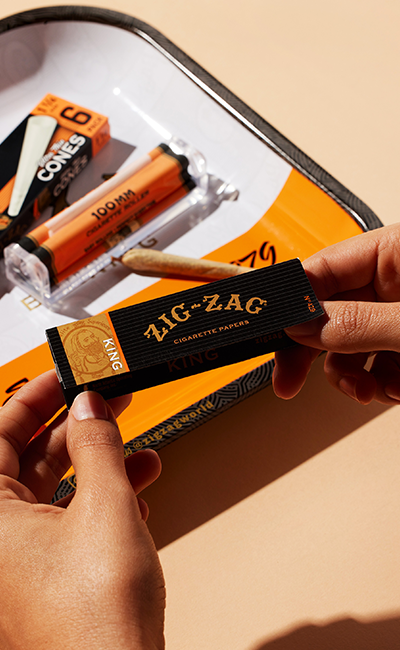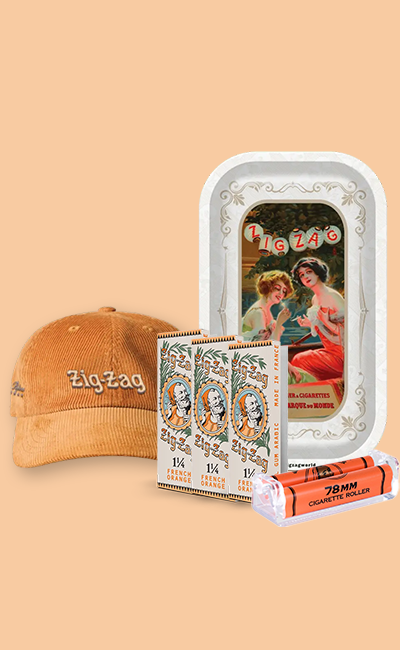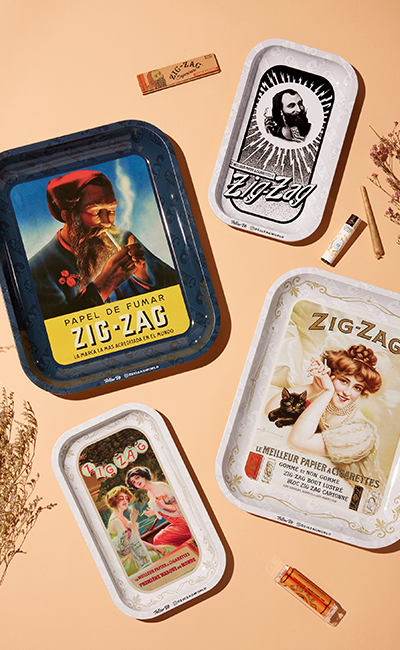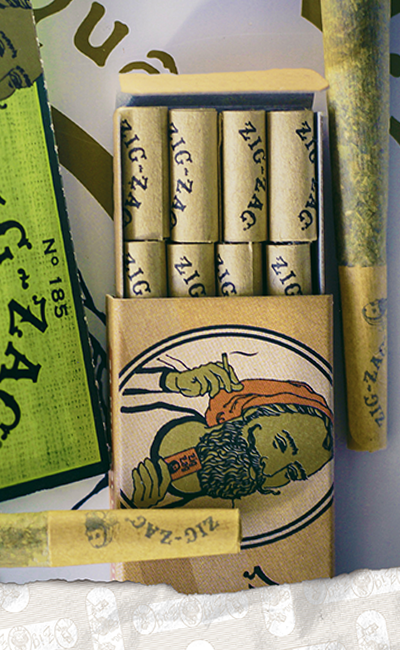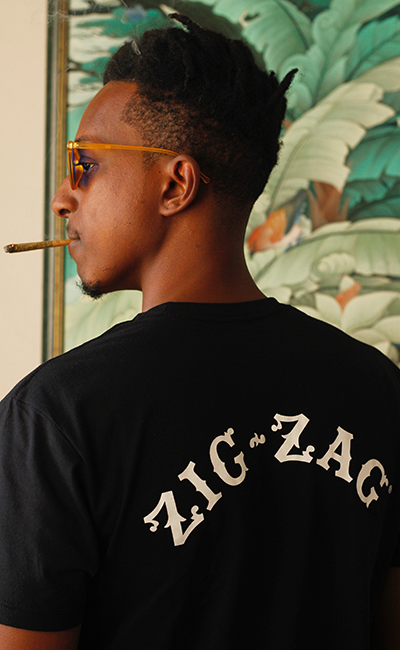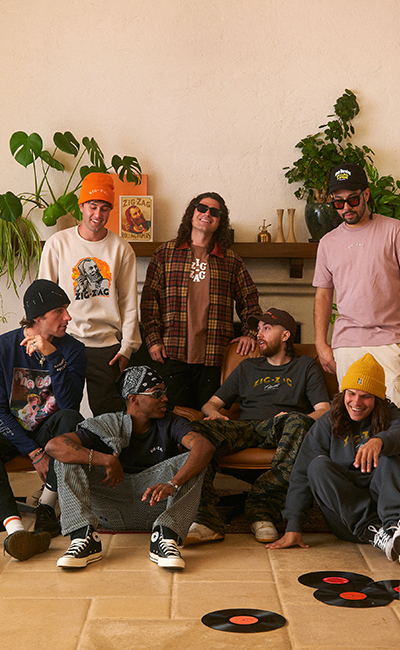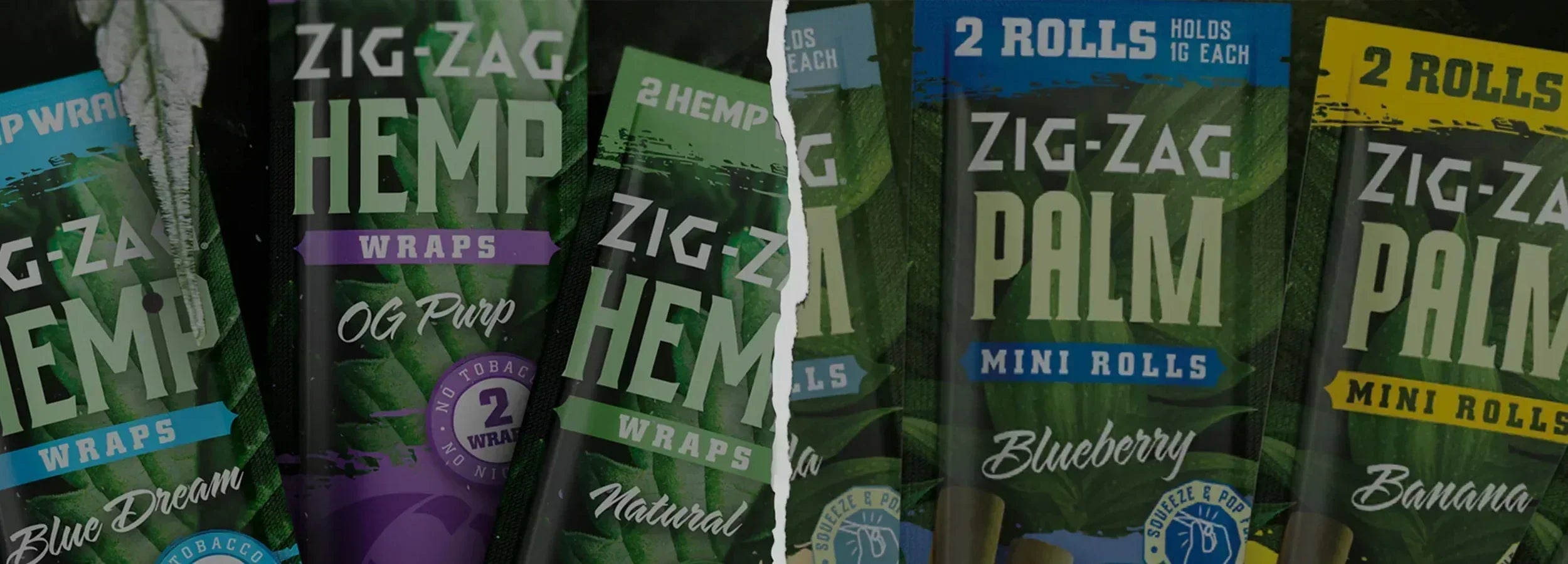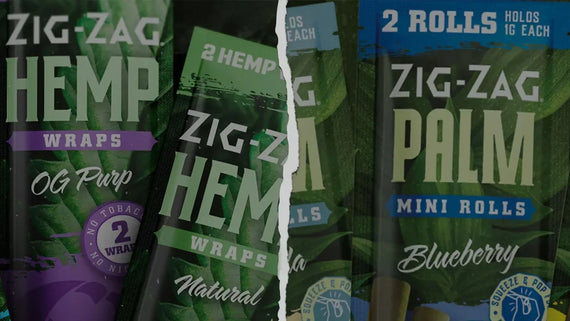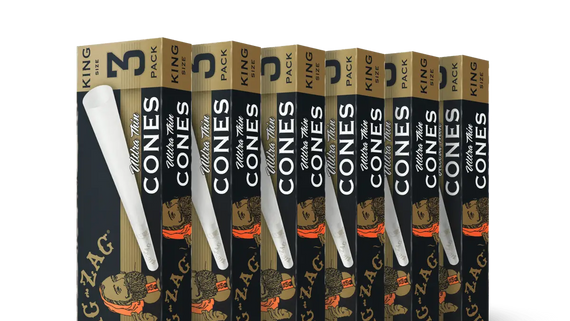Zig-Zag’s Place in Pop Culture: From Vintage Ads to Modern Style
Some logos just stick. That orange booklet? The stoic French soldier? You’ve seen it on a pack, a tee, a poster, maybe even in a friend’s cluttered desk drawer. Zig-Zag rolling papers have been a staple in pop culture for over 140 years.
But we’re not talking about some nostalgic collector’s item that got left behind. Zig-Zag didn’t just survive the counterculture era, we became a reference point across music, design, and personal style. It’s not rare to see our visuals in hip-hop lyrics, in art collabs, or stitched onto modern apparel. The look aged well. So did our brand.
The Origins: Zig-Zag and the Birth of Iconic Rolling Paper Design
Zig-Zag rolling papers started in France back in the late 1800s, but our branding still feels familiar today. If you’ve ever looked at a Zig-Zag pack and thought, “This looks old-school but cool,” you’re right on both counts. Our visual identity hasn’t drifted far from where it began, and that’s part of what makes it work. Let’s rewind to the start.
A French invention with real staying power
Zig-Zag was founded in 1879 by the Braunstein brothers in Paris. They weren’t the first to make rolling papers, but they introduced something clever: interleaved packaging. When you pulled one paper out, the next one would pop up automatically. That motion moved in a zig-zag pattern.
It seems simple now, but it changed how people interacted with their rolling papers. It was the kind of packaging update that turned into industry standard. Sort of like how pull tabs changed soda cans, once it showed up, there was no going back.
Who’s that soldier on the pack?
Let’s talk about the guy on the front. You’ve probably seen him a hundred times. The facial hair, the hat, the serious stare. He’s known as “Le Zouave” (French for “The Zouave”). He was a tribute to a class of light infantry soldiers from North Africa who served in the French army.
According to the brand’s origin story, a French soldier once had his clay pipe shattered in battle, so he improvised with some paper and rolled his own. That tale stuck. The image of the mustached soldier became the literal face of the brand. And not just in France, but everywhere.
Why the early packaging mattered
Zig-Zag’s packaging design stood out, even in the early 1900s. The typography, color scheme, and portrait-style layout gave the pack a formal, almost historical feel. It looked more like a mini art print than something disposable. That’s probably why people started saving them.
Over time, Zig-Zag packs became collectibles, especially those from the mid-20th century. You’ll still find old versions traded or displayed online today. Wanna see how far the aesthetic’s traveled? Check out our Vintage Collection.
From Counterculture to Cultural Staple
Zig-Zag wasn’t created for rebellion, but it sure ended up there. Starting in the 1960s, the brand became part of something bigger than itself: the counterculture.
We didn’t plan it. But sometimes your product shows up where the people are. And in the ‘60s and ‘70s, people were searching for freedom, creativity, and a serious break from the mainstream. And guess what was sitting in their back pocket? A Zig-Zag pack.
We’re not claiming we sparked a revolution. But the fact that our logo started popping up on posters, dorm walls, album inserts, and zines? That says something.
What made Zig-Zag feel counterculture?
It wasn’t flashy. It wasn’t corporate. It didn’t try too hard. That made it different.
Zig-Zag had this quiet confidence. The kind that didn’t need bright neon fonts or fake promises. So naturally, it clicked with the kinds of folks who questioned everything. Artists, college kids, people deep into underground scenes, they didn’t want products screaming for attention. They wanted stuff that made sense.
And our classic packs? They just did.
What did Zig-Zag actually show up in?
-
Underground zines: DIY writers included Zig-Zag ads next to poetry and protest columns.
-
Hand-drawn posters: Artists reused our soldier in collages or drew their own versions.
-
Psychedelic art: During the late ‘60s, Zig-Zag’s minimalist design started getting remixed with bright colors and trippy patterns.
-
College dorms: We heard from people who’d tape a Zig-Zag pack above their bed like it was a mini badge of nonconformity.
It wasn't just design. It was ritual.
There’s something to be said about familiarity. About opening the same kind of pack your older cousin used. Or your art school roommate. Or that one neighbor who always played records too loud on Saturday mornings.
Zig-Zag became part of that moment. You know the one: late-night conversations, mixtapes, experimental ideas, odd snacks, paint-stained hands. It wasn’t just about rolling. It was about what came next. And people remembered that.
The pack was always there. Same soldier. Same size. Same feel.
Zig-Zag in Music: A Lyric, A Lifestyle
From rap verses to reggae beats, Zig-Zag earned a namecheck in music scenes that value realness. We never paid for those shoutouts. They happened because people genuinely used the product. It was in the studio. In the bag. On the shelf between speakers and snack wrappers. Artists wrote what they lived, and Zig-Zag showed up.
So who said it first?
Hard to say exactly. But by the late ‘80s and early ‘90s, Zig-Zag was everywhere in rap lyrics. One of the most quoted early lines came from Dr. Dre, who rapped about "Zig-Zags and Hennessy" in a track that basically soundtracked an entire decade.
Then there was Afroman, who flat-out used the brand in his chart-topping 2001 song. Same story with Wiz Khalifa, who’s probably name-checked more paper brands than anyone alive. Still, Zig-Zag found its way into his verses, tour visuals, and even fan-made merch.
Music videos, merch, and beyond
We started seeing Zig-Zag imagery pop up in:
-
Mixtape covers: Especially in the early 2000s indie scene, DIY designers used our packs as backgrounds
-
Concert posters: Fans brought homemade signs with Zig-Zag logos, stylized in Sharpie
-
Bootleg merch: Let’s just say we’ve spotted more than one band tee with a... familiar soldier on it
No, we didn’t authorize most of it. But it proved Zig-Zag meant something to people making the music. It showed up on their terms.
The Ad Evolution: From Vintage Posters to Streetwear
Zig-Zag print ads built a visual identity people kept coming back to. Now they’re on T-shirts, in thrift stores, and hanging on bedroom walls. It happened slowly. A poster here, a handbill there. Someone took the pack art and blew it up on a wall. Next thing you know, it's in design books. Then it’s on hoodies. You see where we’re going with this.
Early print ads had their own thing going
Back in the early 1900s, Zig-Zag posters didn’t try to look “on-trend.” They were straight-up formal. Clean framing. The soldier front and center. Kind of looked like museum flyers if you think about it.
By the 1930s, we started seeing more stylized layouts like sharper contrast, thinner borders, more emphasis on the brand name itself. And during the ‘50s and ‘60s, you’d spot Zig-Zag posters around cafes and bookstores.
People didn’t always throw them away. That’s the weird part. We’ve talked to folks who kept their Zig-Zag poster for decades, rolled up behind a bookshelf, eventually framed. You can trace a lot of that style back to Zig-Zag 90s-era hip-hop, where early poster art and packaging choices laid the foundation for what designers still reference today.
Then came the flip: streetwear took over
Somewhere around the late 2000s, you started seeing Zig-Zag packs pop up in unexpected places. Not just shelves or smoke shops. But on apparel.
-
Bootleg tees at flea markets
-
Stenciled graphics on canvas bags and denim jackets
-
Custom airbrushed art at underground fashion pop-ups
Fast forward a bit and now Zig-Zag designs are showing up in:
-
Streetwear collaborations
-
Merch tables at hip-hop festivals
-
Online drops that sell out in minutes
People weren’t just repping a brand. They were wearing a graphic they grew up seeing in kitchens, glove compartments, or shoeboxes full of memories. The connection was personal. Real.
The soldier became a style icon (accidentally)
That little portrait of Le Zouave? It ended up everywhere. Reimagined in graffiti. Flipped into bold black-and-white prints. We even saw someone tattoo it on their arm.
We didn’t ask anyone to do that. It just started happening.
That tells you that when design gets that kind of treatment, remixed, worn, remembered, it means it hit deeper than just packaging.
A Brand that Evolves: Zig-Zag and Modern Style
Zig-Zag didn’t need a huge rebrand to stay relevant. There’s a reason we’ve made it past 140 years without going extinct. We didn’t chase every trend. We just made sure our stuff still felt like us, even as everything around us changed. The paper packs might look familiar, but they’ve lived in a dozen different aesthetics, from grungy backpacks to curated flat-lays on IG.
So how’s Zig-Zag still part of the culture in 2025?
First off: the packaging still works
It’s the kind of branding that fits in your hand and your feed. The text spacing, the portrait art, the way the booklet folds just right, it feels intentional. People still photograph it like an accessory. It’s low-key iconic, even if it wasn’t trying to be.
And the new stuff? Same visual DNA, different flavor. (Not actual flavor. Just saying, it’s still Zig-Zag.) You’ve probably seen the newer collections like the cones, wraps, or organic line. The layout’s cleaner. The textures hit different. But the look still traces back to our vintage roots.
The digital side matters more than ever
Look, we’re not trying to be a TikTok brand. But we pay attention.
People tag us in streetwear pics, sneaker drops, flat-lays, close-ups of their coffee tables. Some of them treat the pack like a prop. Some make it the focus. Either way, it’s showing up.
You might scroll past someone’s casual post and boom, there’s a Zig-Zag pack in the corner like it wandered into the frame. And on IG? The hashtag pulls in everything from stylized product shots to graffiti walls in Oakland with Le Zouave’s silhouette. Real content. Not staged.
So what changed? Not much, on purpose
We tweaked some materials. Gave a few collections a refresh. Added new formats. But the feel stayed the same.
Here’s what’s out there right now:
-
Our rolling papers carry the same classic fold, but come in more types than they used to
-
Pre-rolled cones that look clean in flat-lays and get used by artists setting up their workspace
-
Our lineup of wraps and rolls for those who prefer to keep things flexible
-
And our all-natural organic papers, for folks who lean into that whole minimal-ingredient lifestyle
Each one’s a little different in look. But no matter what you pick up, the brand is still unmistakably Zig-Zag. That matters more than it sounds.
Why Zig-Zag Is Still the Best Rolling Paper for the Style-Conscious
If you’ve ever picked up a Zig-Zag pack and felt like it looked cooler than anything else on the shelf, you’re not the only one. There’s a reason this brand keeps getting pulled into fashion, art, and design conversations.
The legacy’s hard to miss
Most rolling paper brands haven’t been around since the 1800s. Zig-Zag has. And that matters.
You’ve got generations of people, parents, older siblings, even the friend from freshman year with a turntable and a fedora, who’ve used the same orange pack. You probably didn’t notice until you realized you’d seen that soldier before. Somewhere.
But it’s not just about history
Legacy helps, but it’s not everything. If the papers felt outdated or cheap or clunky, people would’ve moved on.
Instead, we kept seeing Zig-Zag show up in:
-
Photoshoots with moodier tones and soft textures
-
Flat-lay setups next to cologne and enamel pins
-
TikTok reviews where creators talked more about the pack than the product
That doesn’t happen unless the design feels right. Something about the color, the fonts, the simplicity, it works in the real world. Not just on store shelves.
It also doesn’t pretend to be something it’s not
You’ve seen brands that try too hard. Wild colors. Claims they can’t back up. Fonts that look like a YouTube thumbnail.
Zig-Zag never did that. And people noticed.
It’s quiet branding. But that quietness is confidence. The kind that says: we’ve been doing this. You either get it, or you don’t.
Zig-Zag Is Pop Culture
Zig-Zag didn’t chase pop culture. Pop culture caught up. That’s why we’re still here.
We’re not the brand that fades when a new aesthetic comes around. Lots of brands want to have a moment. Maybe they drop a collab, go viral, get posted, then vanish.
Zig-Zag had decades of slow, steady presence. You don’t even realize how often you’ve seen us until someone points it out.
And no, this isn’t just vintage-core. We’re not stuck in the past.
Sure, we make rolling papers. You know that. But this whole thing isn’t just about the product. It’s about what the product became part of.
Rituals. Friend groups. Creative sessions. Style choices.
If a brand’s still getting name-dropped after 140 years, there’s something there. And we’re not trying to milk it. We just keep doing what we’ve always done. And people keep finding new ways to bring us in.
Zig-Zag papers are made from different materials depending on the style you choose. We offer papers crafted from wood pulp, hemp, flax, and even organic fibers. Each one rolls a little differently, so it depends on what you like. If you're into a more natural option, you might wanna check out our all-natural organic line, it’s made without added dyes or chalk.
Yes, definitely. We make several sizes to fit whatever you're working with. There’s the standard 1 1/4 size, king size, and wide formats too. Some people prefer smaller papers for solo sessions, while others go king size for longer sessions or sharing. You can check out the full range on our papers collection page.
Yup, we’ve got pre-rolled cones for people who’d rather skip the roll altogether. Same Zig-Zag quality, already shaped for you. They’re super convenient, especially if you're short on time or just not into hand-rolling. Our cone selection has different sizes and options to keep it easy.
The orange pack is the classic, it’s medium weight and made from wood pulp. The white pack is ultra-thin and burns a bit slower. Some people swear by one or the other, but it really comes down to your rolling style and what feels best in your hand. If you're new to the brand, starting with the orange is never a bad move.
You can find Zig-Zag papers at most gas stations, smoke shops, and convenience stores across the U.S. Or, you can shop directly from our official site for the full lineup, including exclusive drops and merch. Just remember: you need to be 21+ to make a purchase online. And we do age verification, because we take compliance seriously.
We do offer wraps with flavors, but our traditional rolling papers, like the orange, white, and natural options, don’t have any added flavors. The focus there is on keeping it classic and letting the material speak for itself. If you're into flavors, our wraps and rolls collection is where to look.
Yes, they’re both great but not identical. Our hemp papers are made from 100% pure hemp fibers, giving you a slow, even burn. The organic ones go a step further with unrefined, natural materials. They’re a solid pick for people who want something simple and clean-feeling in their setup.
A lot of people start with Zig-Zag. The texture of the papers makes them easier to grip when learning, especially the classic orange or white packs. If you’re just starting out, you’ll probably find our standard 1 1/4 size the most forgiving. And if rolling’s just not clicking, go with the pre-rolled cones.
They’ve been around since 1879, and not much has changed, because it didn’t need to. The branding stuck. The packaging stayed recognizable. And somehow, it became part of culture without trying to be. It’s not just about nostalgia either, people still reach for Zig-Zag because it works.
We don’t chase trends. We’ve kept our design consistent and focused on quality that people come back to. It’s about being reliable and showing up in people’s real lives. And when a brand’s been mentioned in lyrics, worn on shirts, and passed around for over 140 years, that’s saying something.
